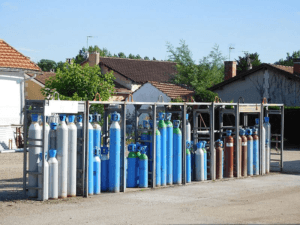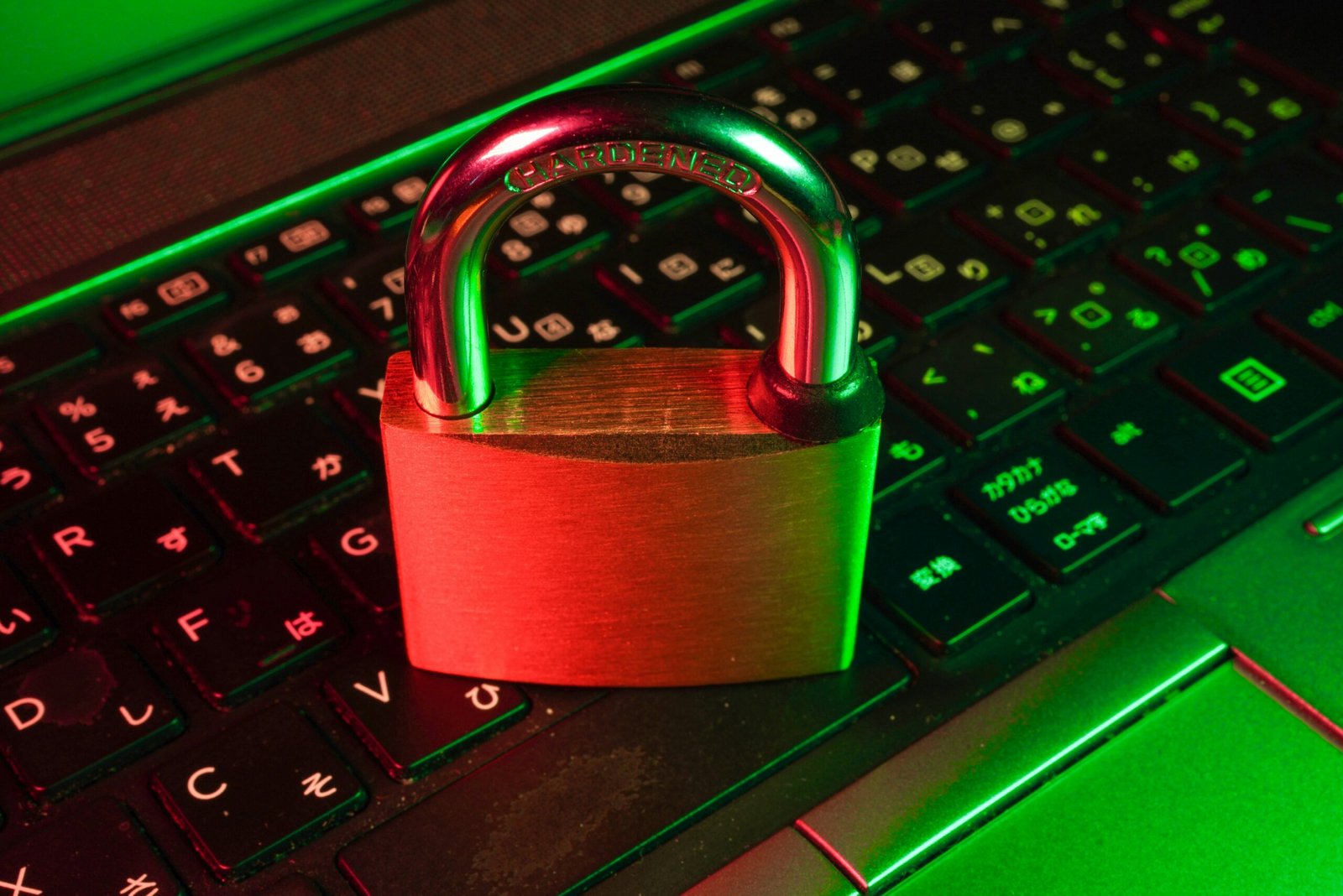In factory we find the use of gas cylinders of oxygen, nitrogen, acetylene, LPG, carbon dioxide, chlorine, sulphur dioxide etc. The gases are filled with pressure. Therefore when they leak, they come out with force and pose hazards of fire, explosion or toxicity. Therefore some rules are to be observed while handling them. They are stated below.
1. Following Indian Standards are useful for understanding design, construction, fittings, testing, safety devices, valves and use of gas cylinders:
• IS 8198 (12 Parts) : Code of practice for steel.
• IS 7241 : Glossary of terms.
• IS 3224 : Valve fittings.
• IS 5903 : Safety devices.
• IS 7202, 9199,9687: Threads of valves.
• IS 4379 : Identification of contents (Colour Code).
• IS 6901 : Pressure regulators for welding and cutting.
• IS 8868 : Periodical inspection.
• IS 5845 : Visual inspection for low pressure gas cylinders.
• IS 8451 : Visual inspection for high pressure gas cylinders.
• IS 8433 : Visual inspection for dissolved acetylene.
• IS 3196 (3 parts) : For LPG, Steel cylinders for low pressure.
• IS 8776 : For LPG, valve fittings.
• IS 8867 : For LPG, vapour & test pressure.
• IS 6044 : For LPG cylinder installations.
• IS 7680 : For ammonia (anhy.) gas.
• IS 7681 : For chlorine gas.
• IS 7312 : For dissolved acetylene gas.
• IS 7142 : For low pressure liquefiable gas.
• IS 7682 : For methyl bromide gas.
• IS 8016 : Hand trolley for cylinder.
• IS 5844 : Hydrostatic stretch testing.
• IS 3933,3870,8382: For medical use.
- Types of safety devices mentioned in IS 5903 are Bursting disc, fusible plug, PRV and their combination. It is prohibited to provide any safety devices on cylinders containing obnoxious or poisonous gases such as CO, HCL, HBr HF, SO2, CI2, H2SO4, town gas, Carbonyl chloride, Nitrosyl, chloride, Nitrogen peroxide, Methylamine and Methyl bromide. Shut-off device (except built-in with safety device) is also prohibited.
Formulae for flow capacity of safety devices, identification and marking number of test and test procedure and periodic inspection and maintenance are also specified in IS: 5903. - Normal procedure to identify and classify (to put into a group) gas cylinders is to see their colours. See IS: 4379 for this purpose commonly used cylinder are painted as under:
Acetylene – Maroon.
Air, N2 – French grey.
Ammonia, CO2, O2, Phosgene – Black.
Argon, HCN – Peacock Blue.
Propane, LPG, CO, H2, Coal gas – Signal red.
Chlorine – Golden yellow.
Ethylene, EO – Dark violet.
Helium, Neon – Middle brown.
SO2 – Light Brunswick green.
Ground colour prescribed for flammable/non-flammable and poisonous/non-poisonous gas or mixture is white. Colour. Code is also prescribed for specific gas mixture.
Thus specific colour indicates specific gas. Therefore the colour shall never be changed. If colour is washed out, rubbed or not clear, write the name of the gas on the cylinder or on a tag tied to it. In one factory, a worker joined an oxygen cylinder instead of nitrogen cylinder to a reaction vessel containing explosive mixture. It results into fire explosion and death of another two workers. A mistake in handling can cause such serious accidents. - First verify the marking, number, company, pressure, weight, capacity and date on the cylinder before their use.
- Cylinder should be handled in its special trolley or gently rolled on its bottom edge but not on the whole surface. It should not be thrown or subjected to undue force for damage. Lifting machinery or magnet should not be used to lift them. While carrying a chlorine tunner (or any heavy cylinder) in a forklift, it should be tied with a chain to prevent rolling.
- Long vertical cylinder should be kept upright in its stand or tied with chain to prevent falling.
- No flammable material should be allowed nearby. Source of ignition, spark, flame, electricity, molten metal etc. must be kept away. Cylinder should not be used as earthing. It should be protected from excessive heat, cold dampness and corrosive chemicals.
- When not in use, the valve should be kept closed and covered with cap. If the valve is leaking, it should be repaired by an expert or trained man, otherwise the cylinder should be shifted in a remote open ground.
- Pressure regulator (double regulators for pressure >800 psi), pressure gauge and non-return valve(NRV) should be maintained in working order. Special spanner may be used to close or open the valve keeping the thread direction in mind. The spanner should be kept nearby.

- Grease or lubricating oil should not be applied on valves of oxygen cylinders.
- A store room of gas cylinders should be well ventilated. Filled and empty cylinders should be kept separate. Construction should be fireproof if flammable cylinders are to be stored.
- Before testing a cylinder, it should be carefully depressurised. Valves should not be interchanged.
- Pipelines connected with cylinder should be kept according to the pressure and type of gas. Flexible plastic pipe for toxic or highly flammable or explosive gas (e.g. Hydrogen) should be avoided or tightened properly and replaced in time. One worker died on the spot due to explosion when hydrogen leaked from the joint of a plastic pipe. Valve should be opened gently and only as per requirement.
- Leakage of flammable gas may be checked by a soap solution and air bubble (not by naked flame or lighter), ammonia by sulphur dioxide and chlorine by ammonia water. Their bottles (torch) should be kept ready. No leakage should be checked by nose.
- Quantity of cylinders should be restricted. If toxic and flammable cylinders are kept in the same shade, a partition wall should be provided. A blast wall is necessary for highly explosive cylinders. In storage of flammable cylinders electric wiring/fitting should be flameproof and No smoking notice should be displayed. Earthing should be double and well maintained. Fire extinguisher, emergency kit and PPE should be kept ready. If the storage is in open land, a wire fencing and locked door should be provided.
- Gas flow-rate may be known by providing flow meter or placing the cylinder on a weighing platform. Flow-rate should not be excessively increased.
- The metal of adopter on a valve should be the same as that of the valve to prevent erosion of threads.
- While connecting or changing a cylinder, necessary respirator and eye goggles shall be worn. First the cylinder valve shall be closed and then the process (header) valve. This will disallow any gas to remain in-between.
- For emptying the residual gas, the cylinder shall not be heated. This needs a suitable vaporiser plant.
- Provisions of Gas Cylinder Rules and SMPV Rules shall be followed.






Need for industrial noise hazards & safety control measures.
Thanks for sharing an informative post. This is very useful to know the tips on LPG cylinder handling.
It’s very useful for me when I read.Thanks for you to share your knowledge with me.
Respected Sir ,
My Self Yuvraj R Kuthe in Firefither and Safety officer in Cv Accepted sir
Hindalco industries Limited
Unit- Birla copper Dahej Gujarat
Experience. 06 year
Awesome work guys , this is helpful.
Keep up the great work.
I have a few concerns.
1. I am using the app. Some of the words are incomplete especially the ones on the right side of my mobile screen.
2. Grease or lubricating oil should not be applied on valves of oxygen cylinders. Why ? I request you to put a brief explanation with such things.( I am not complaining, It’s just for the betterment of the blog. plus i am a lil curious guy 😉
3. As shown in the second picture. Can cylinders be placed directly in the sunlight ?